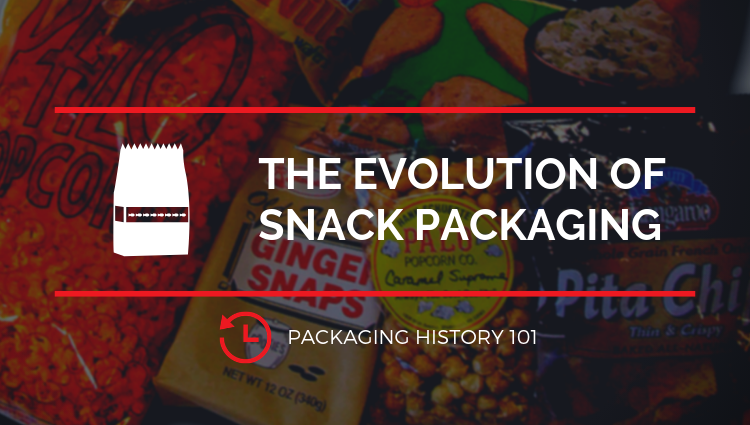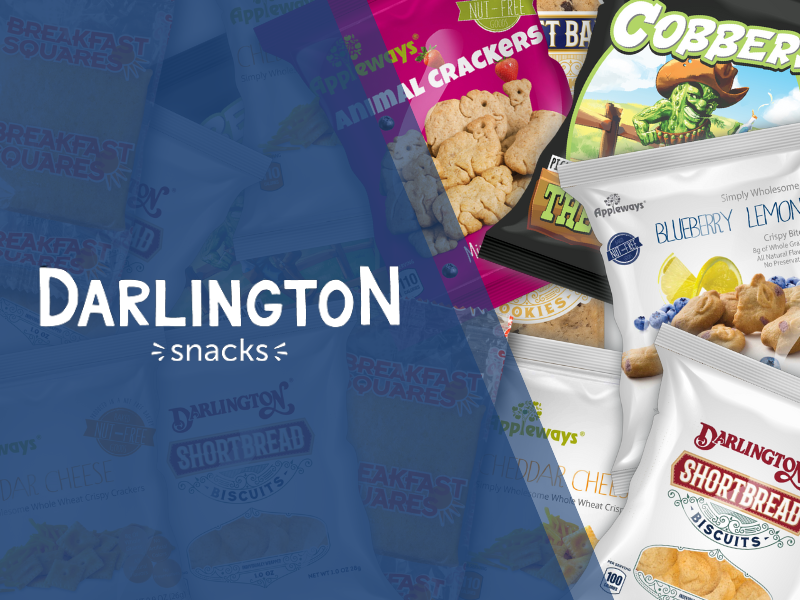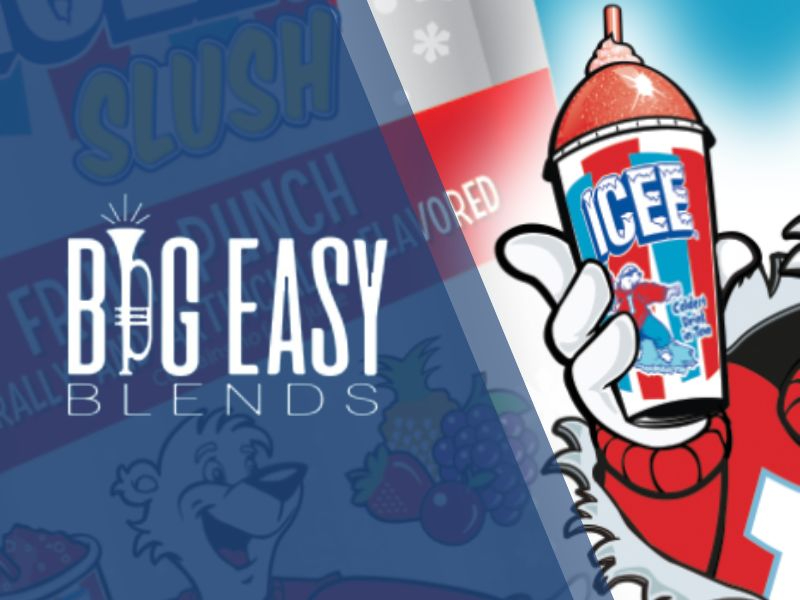Packaging History 101: The evolution of snack packaging
By Danielle Ohl on June 12, 2019

We love our snacks. But for much of modern history, snacks were regarded as lower-class and therefore undesirable.
Often associated with unhygienic street vendors, snack items were not appealing to the general public until the 1920s, when pretzels underwent a rebranding to recoup business lost because of Prohibition in the United States.
One major facet of the rebrand was packaging (of course). Packaging allowed sellers to reduce contamination risk and position their products as safe and legitimate, as well as offer a new canvas for branding and advertising. So pretzels soon soared in popularity, bringing with them a slew of other snack foods like nuts and popcorn, and later the abundance of snacks we currently see on store shelves.
Today, snacks are a vital component of convenient modern life. In fact, 94% of U.S. adults confess to eating a snack within the last 24 hours!
So join us for Snack Packaging History 101 to learn where your favorite snack packages came from. Don't worry, we promise there won't be a test.
Hungry for more packaging history? Check out the first article in our Packaging History 101 series: The evolution of coffee packaging.
Pre-1900s - Snack packaging firsts
1700 - 1800
In 1779, Pemmican, developed by the North American Cree Indians and introduced into the food trade by U.S. soldier Peter Pond, was an energy-producing and filling 'snack' made of fat and protein from large game animals. After the meat was dried into a jerky-like texture, it was mixed with melted fat and, if available, dried fruits. Pemmican was packed and stored in rawhide pouches.
1800 - 1900
In 1896, the National Biscuit Company (Nabisco) was the first company to use folding cartons to package their crackers.
Before 1900, crackers and chips were largely sold out of large barrels. Consumers relied on the storekeeper to scoop them into a bag for purchase. This often left the snacks at the bottom of the containers crushed and stale, and therefore unusable.
Early 1900s - Cardboard and paper dominate snack packaging
1900 - 1906
In 1900, Frank Peters patented wax paper lined cardboard boxes to help keep crackers fresh. Friends with the President of the National Biscuit Company (Nabisco), his invention (called In-Er-Seal) was soon adopted to package Uneeda Biscuit crackers.
 In 1906, the Kellogg brothers were the first to package their cereal in cartons. First used as a health food at their Michigan Sanatorium, their cereal was later sweetened and mass-marketed with a heat-sealed bag of Waxtite wrapped around the outside of the cereal box. Later, the plastic outer wrap was transferred inward to become the modern plastic liner found inside cardboard cereal boxes.
In 1906, the Kellogg brothers were the first to package their cereal in cartons. First used as a health food at their Michigan Sanatorium, their cereal was later sweetened and mass-marketed with a heat-sealed bag of Waxtite wrapped around the outside of the cereal box. Later, the plastic outer wrap was transferred inward to become the modern plastic liner found inside cardboard cereal boxes.
Kellogg's cereal boxes were also the first to contain an in-box prize.
1908
The Leominster Potato Chip Company was the first to sell potato chips commercially. They were sold to shopkeepers in bulk tins and glass jars which were then scooped into smaller tins or bags for consumers to transport home.
1924
Kellogg’s began packaging cereal in wax paper bags that were then packed into cardboard boxes. This bag-in-box method is still widely used today.
1926
Now begins the history of modern potato chip packaging!
Laura Scudder of California began using sealed wax paper bags to package potato chips. Her workers would iron 3 edges of the wax paper together to form a pouch shape, manually package the chips into the bags, and use heat from an iron to seal the top edge shut.
This was considered the first use of consumer chip packaging in bags and allowed the product to stay fresh longer and prevented the crushing that often resulted from packaging fragile snack product in bulk. This invention allowed potato chips to become a mass-market product.
1936
Walter Zwoyer of the Henry Hyde Candy Company invented the vertical form fill seal machine, which would become the standard packaging equipment in many snack companies.
Mid 1900s - Convenience becomes king
1940
Convenience stores arrived on the scene, becoming a popular quick-stop for snacks. As the prevalence of convenience stores grew, packaging became more convenient with the addition of easy-open and easy-dispense features, reclosable zippers, and smaller portable sizes.
1947
After being fried, Snyder's Potato Chips were dumped into large barrels and transported to a packaging room where they were dumped on tables and manually shoveled into bags. The chip bags were weighed by one employee, another folded the bag down, and another employee stapled the bag shut. They were then put into boxes for distribution via rail.
1952
Cheez Whiz was developed by Kraft Foods, packaged in a glass jar. It wouldn't be until 1965 that a competitor, Nabisco, released their version of the canned cheese spread that was propelled through a nozzle.
1956
An organic chemist named Fred Bair was enlisted by Proctor & Gamble to create a new type of chip that would be uniform in size and resist breaking. After coming up with the recipe for Pringles, he also invented the iconic tubular aluminum-coated can.
Mid to late 1900s - Dawn of modern snack packaging machines and materials
1958
This was the year that the first plastic bags were introduced in the snack market. These bags were composed of laminated plastic layers and aluminum to keep air and light out and increase product shelf life. Despite the obvious benefits, it would take about 20 years for this packaging format to dominate the market standard wax paper bags.
 1963
1963
Louis Doyen, a French inventor, invented the Doypack, or stand-up pouch. Today, the plastic Doy style bag is widely used for specialty snacks, giving the product a premium look. Portable and convenient, usually with reclosable zippers, the stand-up pouch is a staple of the modern snack industry.
1965
Snyder's Potato Chips installed a form fill seal packaging machine that formed a paper bag from a continuous roll, filled it with the proper amount of chips, sealed the bag, and cut it off from the packaging roll.
1968
Hunt's Snack Packs debuted, packaged in metal tins with pull-tab tops. By 1984, the tins (and their scary sharp metal tops) were replaced with the safer plastic cups we still see today.
1970
The popularity of wax paper snack bags begins to wane, with plastic bags officially taking the lead in the snack market.
Snyder's Potato Chips installed a high-speed form fill seal machine that could form, fill, and seal at a rate of 74 chip bags per minute.
Late 1900s to early 2000s - Snacking convenience redefined
1974 - 1988
One of the weirdest inventions in snacking history, Gerber Singles for adults, was introduced in 1974. The product was single-serve precooked and pureed foods packaged into glass jars with an intended market of adults living on their own for the first time. Needless to say, this fell flat.
As any child of the 1980s will tell you, Lunchables were a game-changer. Invented in 1988 and packaged into bento boxes (plastic sealed and divided trays), they offered a convenient premade portable snack or meal.
1990 -1999
Introduced in 1990 in tetrahedron packages, Minute Maid Juice Bars were frozen treats that mimicked the feel of an icee.
In 1994, snack nuts were first packaged into stand-up reclosable pouches.
In 1999, Yoplait's Go-Gurt was introduced as portable yogurt in child-friendly easy-open single-serve plastic stick packs.
2002
Frit-Lay created Go Snacks, which were packaged in canisters that fit in car cup holders.
Early 2010s - Snack packaging sustainability is hot
 2010
2010
Sunchips created a biodegradable bag made from polylactic acid (PLA), which is a corn-based polymer. The packaging launch failed spectacularly after consumers complained that the crinkling sound from the packaging was way too loud.
2012
Utz Quality Foods create a system that integrates with vertical form fill seal machinery to wrap six single-serving potato chip bags in clear film, creating a stackable package that resembles a bread bag.
David Edwards, a Bioengineer from Harvard, developed edible packaging for snack foods like yogurt.
2018
Futamura debuted a 100% plastic-free compostable chip bag made from barrier film. The bag was the first of its kind on the European market.
Learn about modern snack packaging trends
Download our free ebook: Small is the New Big, to learn about trends influencing snack packaging today:
Get your FREE snacking trends ebook >>
Related Posts

[VIDEO] Snacking smarter: How Darlington Snacks doubled output with automated packaging lines

Delivering packaging excellence: How Big Easy Blends improved quality with packaging automation
